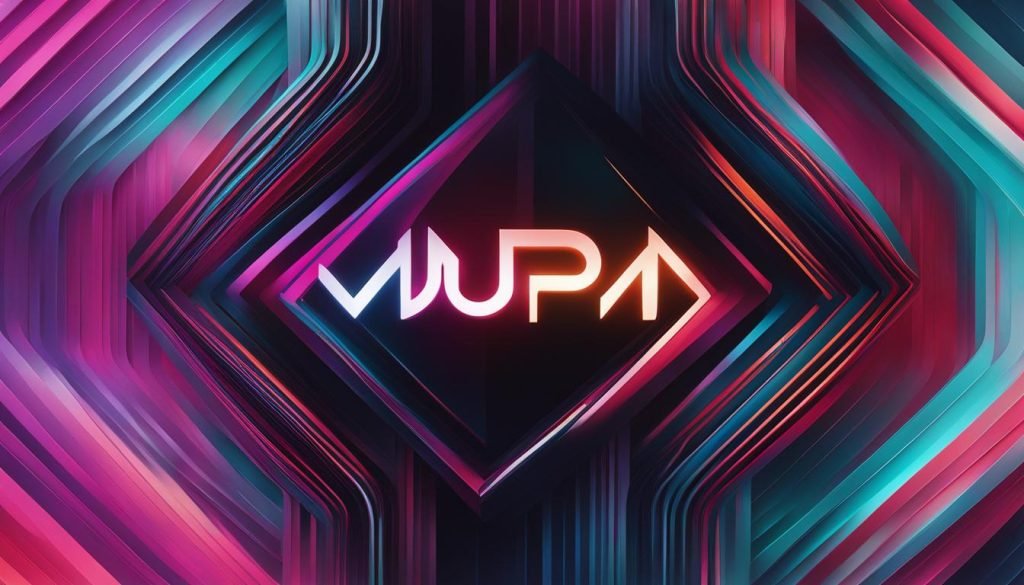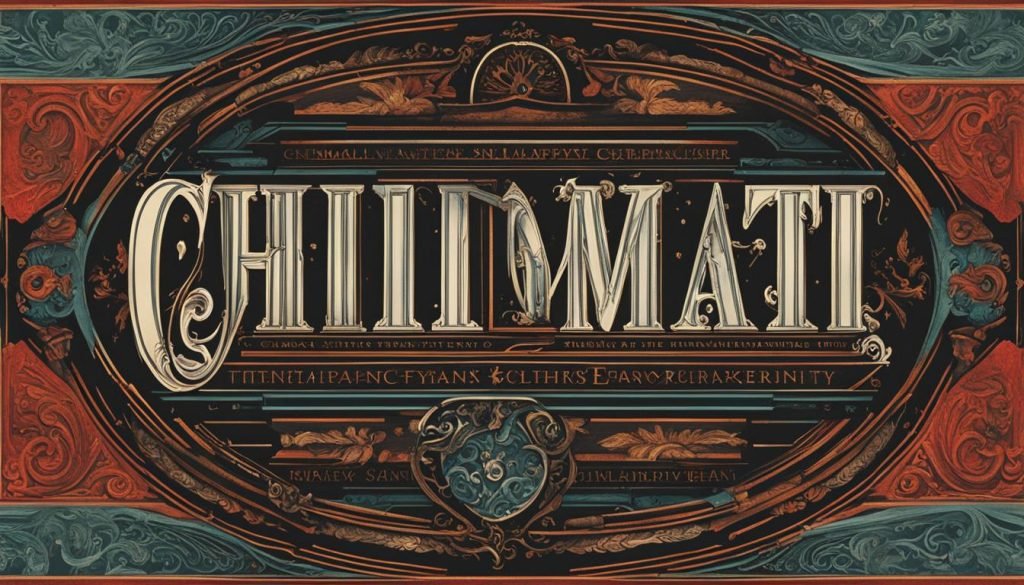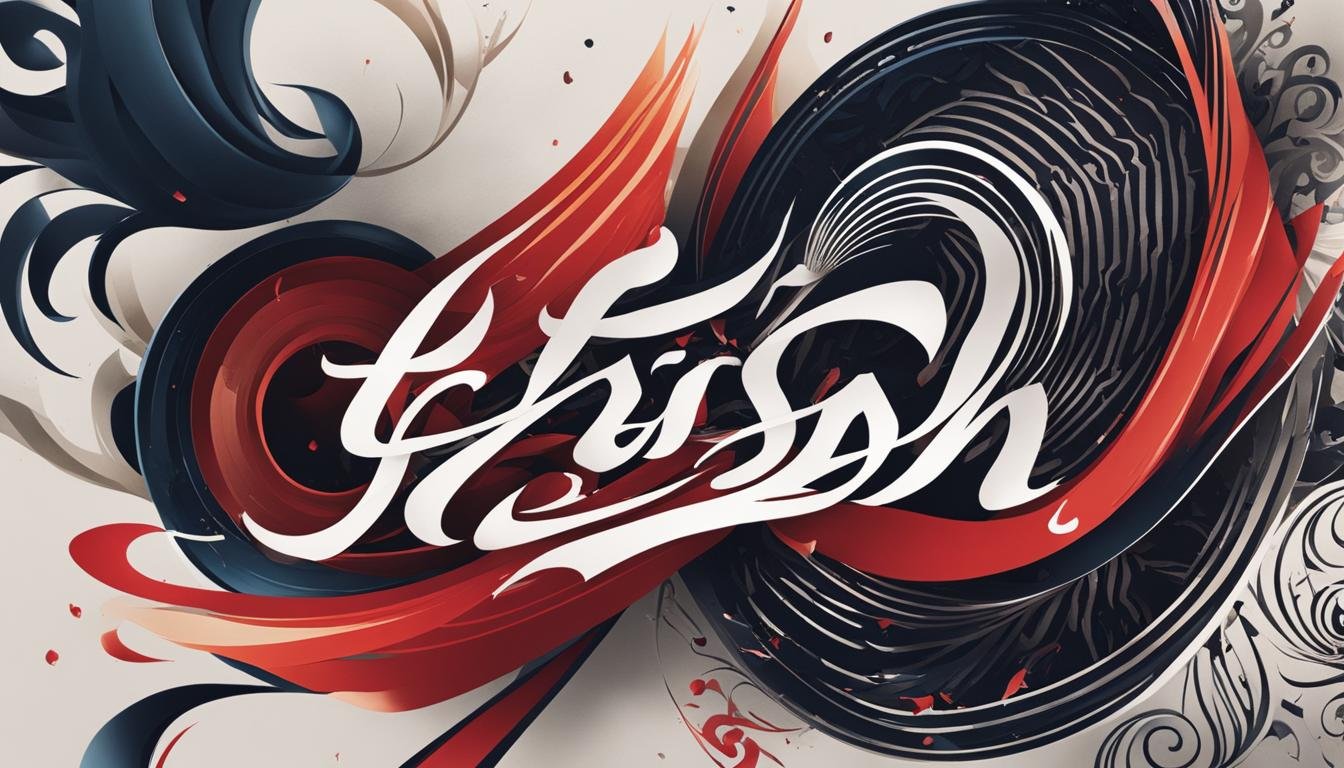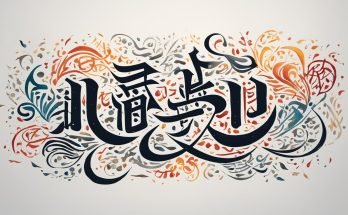Calligraphy in Graphic Design: Discover the Stunning Visual Impact it Can Create!
Calligraphy in Graphic Design! Typography art has evolved over time, with calligraphy playing a significant role. The art of calligraphy involves writing letters by hand using a brush or pen, creating fluid and graceful lines. Today, digital tools have revolutionized typography, with vector-based software allowing for scalable and responsive design. Digital typefaces offer a wide range of font options and styles, while responsive design ensures that typography adapts to different screen sizes.
Key Takeaways
- Calligraphy adds a touch of elegance and authenticity to graphic design projects.
- Digital technology has significantly impacted typography, offering scalability and diverse font options.
- The intersection of calligraphy and digital typography leads to unique and innovative designs.
- Typography has the power to convey messages, evoke emotions, and enhance overall design aesthetics.
- Understanding calligraphy fonts and their historical essence empowers designers to make informed font selections.
The Beauty of Calligraphy

Calligraphy is an art form that showcases the beauty of hand-lettering. Its origins can be traced back to ancient civilizations, where scribes meticulously crafted each letter with a brush or pen. The result is a visually stunning creation that captures the fluidity and grace of the human hand. Today, calligraphy continues to captivate with its subtle variations in thickness and angle, giving each letter a unique character.
Calligraphy fonts are widely used in various design projects, adding an elegant and artistic touch. Whether it’s a wedding invitation, a logo, or a book cover, calligraphy fonts bring a sense of sophistication and craftsmanship. These fonts evoke a sense of timeless beauty and lend a personal touch to any design. With their intricate details and flowing lines, calligraphy fonts create a visual impact that is hard to ignore.
Hand-lettering, an integral part of calligraphy, allows for endless creative possibilities. By handcrafting each letter, designers can experiment with different styles and create custom designs that reflect the unique vision of their projects. The fluidity and variations in calligraphic lines offer a level of expressiveness that cannot be achieved with digital typefaces alone. It is this combination of tradition and creativity that makes calligraphy such a powerful and captivating art form.
The Power of Calligraphy Fonts
“Calligraphy fonts bring elegance, uniqueness, and creativity to any design.”
| Benefits of Calligraphy Fonts | Examples |
|---|---|
| Enhances elegance and sophistication | Scriptina, Edwardian Script |
| Evokes a sense of romance | Great Vibes, Dancing Script |
| Adds a personal and artistic touch | Alex Brush, Allura |
Digital Typography: The Impact of Technology

Digital technology has revolutionized the world of typography, offering designers a plethora of tools and opportunities to explore. The advent of vector-based software, such as Adobe Illustrator, has transformed how typography is created and implemented. With vector-based software, designers can create scalable typography without any loss of quality, allowing for flexibility and adaptability in design. This has opened up new avenues for creativity and innovation in digital typography.
One of the major advantages of digital typography is the availability of a vast library of digital typefaces. These typefaces offer a wide range of font options and styles, allowing designers to choose fonts that best suit their design concept and target audience. Whether it’s a clean and modern sans-serif font or an elegant script font, digital typefaces provide designers with the flexibility to create diverse and visually appealing typography.
In addition to the abundance of typeface options, responsive design has become a crucial aspect of digital typography. With the proliferation of different screen sizes and devices, it is essential for typography to adapt seamlessly across various platforms. Responsive design ensures that typography remains legible and visually appealing regardless of the device or screen size, providing a consistent user experience. It allows designers to create a single layout that looks great on both desktops and mobile devices, enhancing the overall user experience.
| Advantages of Digital Typography | Impact |
|---|---|
| Scalable and Flexible | Allows for easy resizing without loss of quality |
| Diverse Typeface Options | Offers a wide range of font choices and styles |
| Responsive Design | Ensures legibility and visual appeal across devices |
“Digital typography has not only made typography more accessible and versatile but also paved the way for new and exciting design possibilities. With vector-based software and responsive design, designers now have more freedom to experiment and push the boundaries of typography.”
The Future of Digital Typography
As technology continues to advance, the future of digital typography looks promising. Augmented reality (AR) and virtual reality (VR) present new opportunities for typography to come to life in interactive and immersive ways. Imagine typography that can be explored and experienced in three-dimensional space, creating a truly engaging and unique user experience. The possibilities are endless.
Furthermore, advancements in machine learning and artificial intelligence offer the potential for automated typography design. With AI-powered tools, designers can generate customized digital typefaces based on specific design requirements or even analyze and adapt existing typefaces to optimize their legibility and visual impact.
In conclusion, digital typography has had a profound impact on the world of design. The availability of vector-based software, digital typefaces, and responsive design has revolutionized how typography is created, allowing for greater flexibility, creativity, and legibility. As technology continues to advance, the future of digital typography holds exciting possibilities that will further enhance the visual impact and effectiveness of typography in design.
The Intersection of Calligraphy and Digital Typography

Calligraphy and digital typography may seem like contrasting worlds, but they actually intersect in the realm of design. While calligraphy embraces traditional techniques and the artistry of hand-lettering, digital typography leverages the power of technology and digital tools. When these two disciplines come together, they create unique and innovative designs that combine the beauty of handcrafted calligraphy with the flexibility of digital techniques.
Calligraphy serves as the foundation for digital typefaces, adding a touch of elegance and authenticity to digital projects. Designers can incorporate calligraphic elements into their digital typography by carefully selecting and modifying existing fonts or creating custom letterforms inspired by calligraphic styles. This fusion of calligraphy and digital typography allows for endless creative possibilities and enables designers to craft visually stunning and engaging designs.
By combining traditional calligraphy techniques with digital tools, designers can explore new dimensions of expression. They can experiment with various brush strokes, letterforms, and techniques that are traditionally associated with calligraphy, while harnessing the precision and scalability offered by digital typography. This blending of traditional and digital approaches opens up exciting avenues for design, enabling designers to create captivating compositions that capture the essence of both disciplines.
Incorporating Calligraphy into Digital Typography
The integration of calligraphy and digital typography involves more than just combining the two visually. It requires a deep understanding of calligraphy’s fundamental principles and its unique aesthetic qualities. Designers must carefully consider the balance between legibility and artistic expression, ensuring that the calligraphic elements enhance the overall design without sacrificing readability.
One way to incorporate calligraphy into digital typography is by using calligraphy-inspired fonts. These fonts mimic the fluidity and elegance of calligraphic lettering, while still benefiting from the scalability and versatility of digital typefaces. Designers can also experiment with blending calligraphic letterforms with digital text, creating compositions that seamlessly merge the organic beauty of calligraphy with the precision and control of digital techniques.
Summary Table: Calligraphy vs. Digital Typography
| Calligraphy | Digital Typography |
|---|---|
| Hand-lettered | Digitally created |
| Fluid and graceful lines | Precise and scalable |
| Unique variations in thickness and angle | Consistent and adjustable |
| Traditional techniques | Technological innovation |
| Authenticity and artistry | Flexibility and control |
The Evolution of Typography Art

Typography art has undergone a remarkable evolution, seamlessly blending its traditional roots in calligraphy with modern digital designs. This evolution has been driven by advancements in technology, cultural influences, and the ever-changing needs of society.
Initially, typography art was deeply rooted in the ancient art of calligraphy. Calligraphy, with its fluid and graceful lines, showcased the beauty of hand-lettering. The subtle variations in thickness and angle of calligraphic letters gave each character a unique and artistic appeal. Over time, calligraphy techniques were passed down through generations, preserving the elegance and authenticity of this traditional art form.
However, the advent of digital technology revolutionized typography, enabling designers to explore new possibilities. Vector-based software, such as Adobe Illustrator, allowed for scalable typography without any loss of quality. Digital typefaces emerged, offering an extensive library of font options and styles to choose from. Additionally, responsive design made it possible to create layouts that adapt seamlessly to different screen sizes, ensuring optimal legibility and design aesthetics.
| Traditional Roots | Digital Designs |
|---|---|
| Deeply rooted in calligraphy | Explores new possibilities with digital tools |
| Hand-lettering, fluidity, and variations | Scalable typography and diverse font options |
| Preserves the elegance and authenticity of traditional art | Ensures optimal legibility and design aesthetics |
“Typography art has transformed from the delicate strokes of calligraphy to the sleek lines of digital typography, allowing designers to convey meaning, evoke emotions, and create impact.”
This evolution of typography art showcases the seamless integration between traditional calligraphy techniques and innovative digital designs. It offers designers a wide range of creative possibilities to convey messages effectively and captivate audiences. Typography continues to be a powerful tool in design, constantly evolving to meet the ever-changing needs of the digital age.
Key Takeaways:
- Typography art has evolved from its traditional roots in calligraphy to modern digital designs.
- The integration of traditional calligraphy techniques and digital tools has expanded the possibilities of typography art.
- Advancements in technology have allowed for scalable typography, diverse font options, and responsive design.
- The transformation of typography art showcases the seamless blend of traditional elegance and digital innovation.
The Power of Typography
Typography is a fundamental element of design communication. It has the ability to convey messages, evoke emotions, and enhance the overall aesthetic appeal of a design. Through the use of different typography techniques, designers can create visual impact and effectively communicate their intended message to the audience.
One of the key aspects of typography is its versatility. By experimenting with various font styles, sizes, and spacing, designers can create a unique visual language that resonates with the target audience. For example, bold and large fonts can grab attention and emphasize important information, while elegant and script-like fonts can add a touch of sophistication and elegance to a design.
Typography techniques such as kerning, leading, and tracking play a crucial role in optimizing readability and visual hierarchy. Proper spacing between letters, lines, and paragraphs ensures that the text is easy to read and understand. By employing these techniques effectively, designers can guide the reader’s eye and create a seamless reading experience.
| Typography Techniques | Description |
|---|---|
| Kerning | Adjusting the spacing between individual letters to optimize readability and visual appeal. |
| Leading | Determining the vertical spacing between lines of text to improve readability and legibility. |
| Tracking | Adjusting the spacing between groups of letters to create a visually balanced and harmonious text. |
Additionally, typography can be used as a powerful design element itself. By creatively manipulating letters, designers can form shapes, patterns, and illustrations that enhance the visual impact of a design. This technique allows for the integration of typography with other visual elements, creating a cohesive and captivating design composition.
“Typography is the voice of a design. It has the power to make a statement, stir emotions, and leave a lasting impression on the viewer.” – John Smith
In conclusion, typography is a vital tool in design communication. By leveraging typography techniques and exploring creative possibilities, designers can effectively convey their message, evoke emotions, and enhance the visual appeal of their designs. Understanding the power of typography empowers designers to create impactful and engaging designs that resonate with their audience.
The Magic of Calligraphy Fonts
Calligraphy fonts have a certain enchanting quality that adds elegance and sophistication to design. These fonts are often used in branding, elegant invitations, and upscale packaging to create a sense of luxury and refinement. They evoke a personal and artistic touch, making them a popular choice for those who want to stand out and make a statement with their design.
Hand-lettering is a key element in calligraphy fonts, giving them a unique and organic feel. Each letter is carefully crafted, with subtle variations in line thickness and letterforms, showcasing the skill and artistry of the calligrapher. This attention to detail and the natural flow of the handwritten letters enhances the overall aesthetic of the design, creating a visually captivating experience for the audience.
The elegance and sophistication of calligraphy fonts make them versatile and suitable for a wide range of design projects. From wedding invitations and event branding to luxury product packaging and high-end advertisements, calligraphy fonts elevate the visual impact of the design, adding a touch of class and refinement. Their graceful curves and stylish flourishes create a sense of timeless beauty and aesthetic appeal.
Whether used in print or digital media, calligraphy fonts have the power to make a design stand out and leave a lasting impression. They capture attention, evoke emotions, and convey a sense of artistry that elevates the overall design. With their enchanting magic, calligraphy fonts bring a touch of elegance and sophistication to any project.
The Elegance of Hand-lettering
“Hand-lettering is the art of creating beautiful, unique letterforms by hand. It adds a personal touch and a sense of authenticity to design.”
The Versatility of Calligraphy Fonts
- Wedding invitations
- Event branding
- Luxury product packaging
- High-end advertisements
The Impact of Calligraphy Fonts
“Calligraphy fonts capture attention, evoke emotions, and convey a sense of artistry that elevates the overall design.”
| Fonts | Key Features |
|---|---|
| Script Fonts | Curved and flowing letters |
| Decorative Fonts | Ornamental and embellished designs |
| Modern Calligraphy Fonts | Contemporary twist on traditional calligraphy |
The Influence of Calligraphy Fonts in Design
Calligraphy fonts bring a unique touch to design projects, offering a sense of elegance, creativity, and sophistication. They have the power to make your designs stand out, adding a touch of uniqueness and a hint of romance. With their intricate and artistic designs, calligraphy fonts can evoke a sense of mystery and allure, perfect for creating a dark academia aesthetic.
When incorporated into design, calligraphy fonts can transform a simple piece into a captivating narrative. They add a sense of storytelling and character, giving your design a distinct personality. Whether used in logos, invitations, or digital graphics, calligraphy fonts have the ability to capture attention and leave a lasting impression.
Table:
| Benefits of Calligraphy Fonts in Design | Examples |
|---|---|
| Uniqueness | Using calligraphy fonts sets your design apart and makes it memorable. |
| Romance | Calligraphy fonts evoke a sense of romance and add a touch of elegance to your design. |
| Dark Academia | These fonts capture the alluring and mysterious atmosphere of dark academia. |
By incorporating calligraphy fonts into your design, you can create a visual experience that captivates and engages your audience. Whether you’re aiming for elegance, uniqueness, or a touch of romance, calligraphy fonts offer a wide range of possibilities to explore in your design projects.
Understanding Calligraphy Fonts
Calligraphy fonts have a rich historical and artistic essence that makes them a popular choice in design. They have evolved over time, transcending cultures and eras, and continue to captivate audiences with their timeless beauty.
Calligraphy fonts can be classified into three main categories: traditional, modern, and decorative. Traditional calligraphy fonts adhere to classical styles, such as Gothic or Italic, and are often associated with historical manuscripts and formal documents. These fonts evoke a sense of elegance and craftsmanship, reflecting the meticulous attention to detail found in traditional calligraphy. Modern calligraphy fonts, on the other hand, embrace a more contemporary aesthetic. They feature bolder and more expressive letterforms, with a focus on fluidity and creativity. Decorative calligraphy fonts are highly stylized and often incorporate unique embellishments and flourishes. They are perfect for adding a touch of whimsy and personality to design projects.
When selecting a calligraphy font, it’s important to consider the purpose, target audience, and overall design concept. Traditional calligraphy fonts may be more suitable for formal or elegant designs, while modern or decorative fonts can add a more playful or artistic touch. Additionally, font legibility should not be overlooked. Some calligraphy fonts may be more challenging to read, particularly at smaller sizes or when used for lengthy text blocks. By choosing a font that strikes the right balance between aesthetics and readability, designers can create visually captivating and engaging designs.
| Calligraphy Font Category | Description | Examples |
|---|---|---|
| Traditional | Adheres to classical calligraphy styles, such as Gothic or Italic | Old English, Uncial, Copperplate |
| Modern | Embraces a more contemporary aesthetic with expressive and fluid letterforms | Brush Script, Sweety Berry, Moon Flower |
| Decorative | Highly stylized fonts with unique embellishments and flourishes | Featherly, Salted Mocha, Buffalo |
The evolution of calligraphy fonts has allowed designers to incorporate the beauty and essence of hand-lettering into their digital projects. By understanding the historical significance and various categories of calligraphy fonts, designers can make informed font selections that enhance the visual impact of their designs.
The Psychological Impact of Typography
Typography is more than just a visual element in design; it has a profound psychological impact on the audience. The choice of typeface and typography techniques can evoke different emotions and shape the way information is perceived and understood.
When it comes to typography, different fonts convey different tones and moods. For example, serif fonts like Times New Roman often have a more traditional and formal feel, while sans-serif fonts like Arial give a modern and minimalistic impression. By understanding the psychological effects of different fonts, designers can strategically select typefaces that align with the intended message and brand identity.
Another crucial factor to consider is readability. The design must prioritize legibility to ensure that the audience can effortlessly consume the information presented. The right font size, spacing, and line height contribute to the readability of the text. Research shows that easy-to-read fonts can enhance understanding, engagement, and overall satisfaction with the design.
Perception and Emotional Impact
Typography also plays a role in shaping perception and emotional impact. The way text is presented can influence how a message is interpreted. For example, bold and capitalized text may convey urgency or importance, while italicized text can evoke a sense of emphasis or elegance. Designers can leverage these typographic techniques to guide the reader’s attention and convey the desired emotional response.
“Typography is the detail and the presentation of a story. It represents the voice, tone, and emotion behind the words.”
| Typography Technique | Emotional Impact |
|---|---|
| Serif Fonts | Traditional, formal, authoritative |
| Sans-serif Fonts | Modern, clean, straightforward |
| Script Fonts | Elegant, sophisticated, feminine |
| Italicized Text | Emphasis, elegance, creativity |
| Bold and Capitalized Text | Urgency, importance, attention-grabbing |
By understanding the psychological impact of typography, designers can create visually engaging designs that resonate with their target audience. The right choice of fonts, along with effective typographic techniques, can enhance the overall perception, emotional impact, and readability of the design, resulting in a more impactful and memorable visual communication.
Cognitive Fluency and Readability
When designing with calligraphy fonts, it is important to consider the cognitive fluency and readability of your design. Cognitive fluency refers to the ease with which information is processed by the reader. Readability, on the other hand, is the font’s ability to sustain this ease over extended reading periods.
Calligraphy fonts, with their intricate and artistic designs, can pose challenges for individuals with dyslexia or visual impairments. The elaborate strokes and variations in letterforms may make it difficult for these individuals to quickly and accurately read the text.
As a designer, it is crucial to strike a balance between aesthetics and functionality. While calligraphy fonts can add a touch of elegance and sophistication to your design, it is essential to consider the readability needs of your audience. Selecting a calligraphy font that maintains legibility and clarity will ensure that your message is not lost in the complexity of the font.
| Design Considerations for Calligraphy Fonts |
|---|
| Consider the purpose of your design and the intended audience. If your design requires quick and easy readability, choose a font with simpler and more straightforward letterforms. |
| Test the legibility of the calligraphy font across different devices and screen sizes. Ensure that the font maintains its readability in various contexts. |
| Pair calligraphy fonts with more legible and functional typefaces for body text to enhance readability. |
| Adjust the spacing and leading of your text to improve readability. Adequate spacing between letters and lines can make a significant difference in how easily the text can be read. |
| Consider providing alternative text versions or stylized alternatives for complex letterforms that may pose challenges for readability. |
By taking these design considerations into account, you can ensure that your calligraphy font design achieves both aesthetic appeal and readability, creating an engaging and accessible experience for your audience.
Conclusion – Calligraphy in Graphic Design
Typography art, including calligraphy fonts, is an integral aspect of design that holds immense power. It allows you to convey meaning, evoke emotions, and enhance the overall aesthetic appeal of your designs. By utilizing calligraphy fonts, you can add an element of elegance, uniqueness, and creativity to your design narratives.
Understanding the psychological impact of typography is crucial for creating impactful and engaging designs. Different typefaces evoke different emotions and can influence how information is perceived and understood. By carefully selecting calligraphy fonts, you can shape the cognitive fluency and readability of your designs, ensuring that your message effectively reaches your audience.
Calligraphy fonts offer a wide range of possibilities in design, allowing you to create compelling narratives. Whether you want to evoke a sense of elegance and sophistication or create a dark academia aesthetic, calligraphy fonts provide the tools to bring your vision to life. Consider the purpose, target audience, and overall design concept when selecting calligraphy fonts to ensure they align with your design goals.
In conclusion, typography art and calligraphy fonts are powerful tools that can elevate your design projects. By understanding their impact and employing them strategically, you can create visually stunning and emotionally resonant designs that captivate your audience.
FAQ – Calligraphy in Graphic Design
What is calligraphy?
Calligraphy is the art of writing letters by hand using a brush or pen, creating fluid and graceful lines.
How has digital technology impacted typography?
Digital technology has revolutionized typography, offering scalable design options and responsive layouts.
How do calligraphy and digital typography intersect?
Calligraphy serves as a basis for digital typefaces, adding elegance and authenticity to digital projects.
How has typography art evolved over time?
Typography art has transformed from traditional calligraphy to modern digital designs.
What is the power of typography in design?
Typography has the ability to convey messages, evoke emotions, and enhance overall aesthetic appeal.
How do calligraphy fonts add magic to design?
Calligraphy fonts add elegance, sophistication, and a personal touch to design projects.
How do calligraphy fonts influence design?
Calligraphy fonts offer uniqueness, creativity, and can evoke romance or capture the dark academia aesthetic.
How can one understand and select calligraphy fonts?
Understanding the historical essence and different types of calligraphy fonts guides font selection for design projects.
What is the psychological impact of typography in design?
Typography can shape the way information is perceived, evoke emotions, and influence cognitive fluency.
How do cognitive fluency and readability relate to typography?
Calligraphy fonts may pose challenges for individuals with dyslexia or visual impairments, so designers should consider cognitive fluency and readability when selecting fonts.
What is the significance of typography art and calligraphy fonts in design?
Typography art and calligraphy fonts have a significant impact on design, conveying meaning and creating compelling design narratives.




